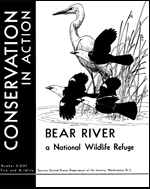United States Fish and Wildlife Service

United States Fish and Wildlife Service: Publications
Date of this Version
2010
Citation
Jones, S. L. 2010. Sprague’s Pipit (Anthus spragueii) conservation plan. U.S. Department of Interior, Fish and Wildlife Service, Washington, D.C.
Abstract
Apparently widespread during early European settlement, Sprague’s Pipits breeding distribution has contracted sharply from its historical range. Sprague’s Pipits were recorded as abundant during early European exploration; currently, they are common only in remnant large grassland patches in the northern mixed-grass native prairie of North America. Much of the decline of Sprague’s Pipits occurred in the late 19th and early 20th centuries as the short- and mixed-grass prairies were converted to agriculture. Since ca. 1900, approximately 75% of native Canadian prairie and 80% of aspen parkland have been converted from native grassland; in the United States, approximately 60% of native mixed grass prairie has been converted to cropland.


Comments
U. S. government work.